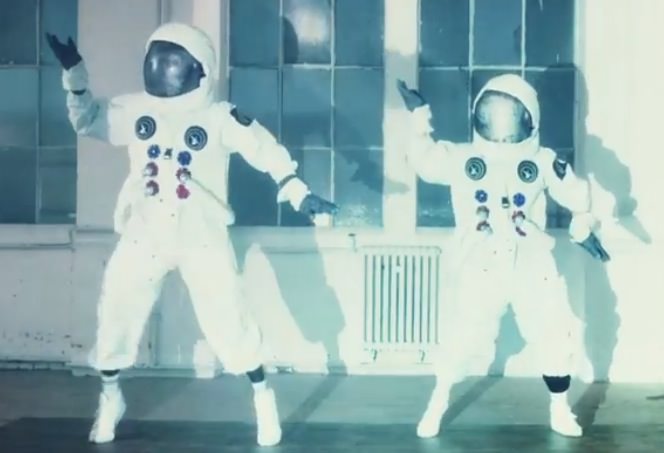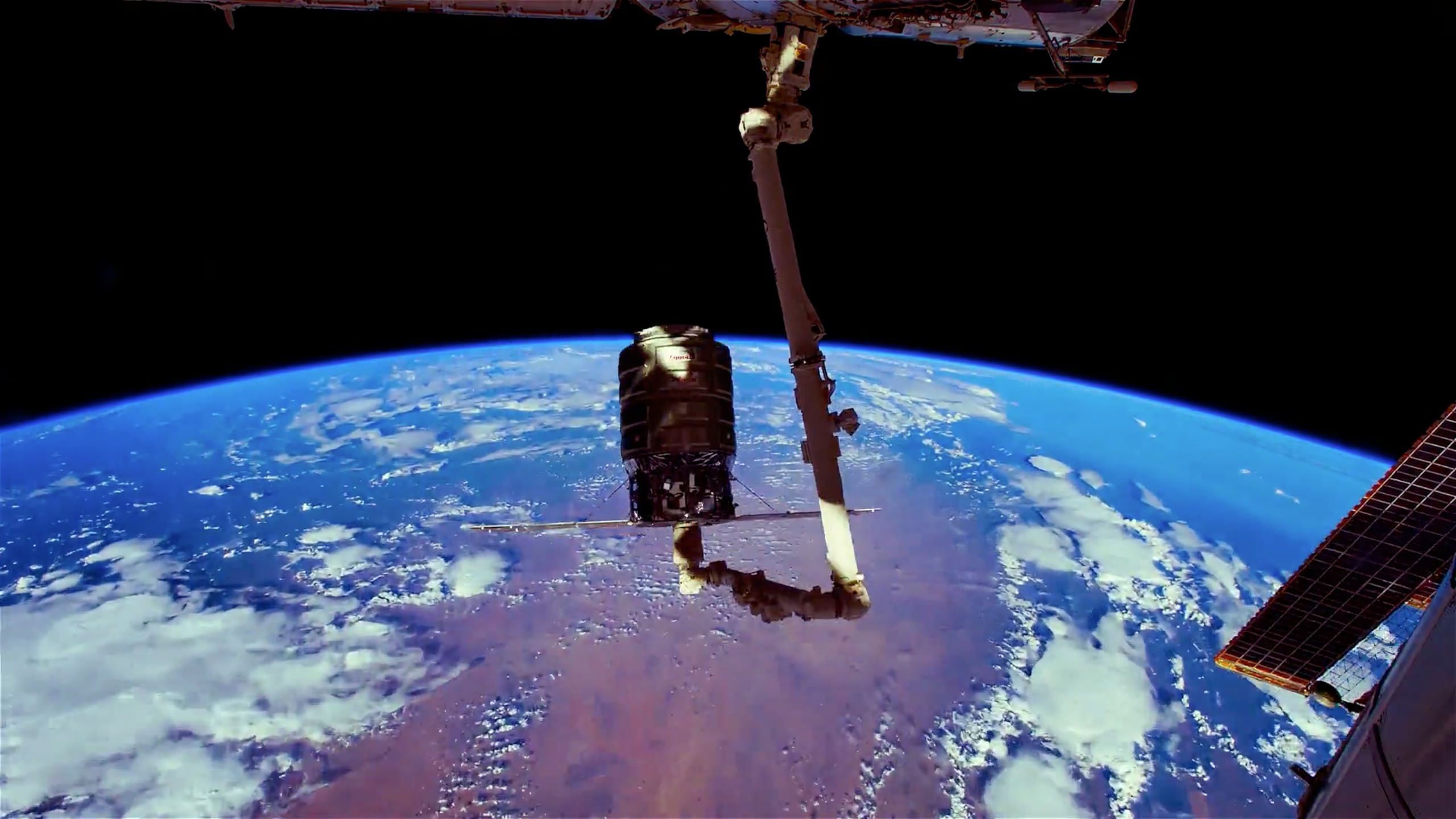One day – and it really is only matter of time – humans will set foot on the surfaces of other far-flung worlds in our Solar System, leaving the Earth and Moon far behind to wander the valleys of Mars, trek across the ice of Europa, and perhaps even soar through the skies of Titan like winged creatures from ancient legends. But until then we must rely on the exploration of our robotic emissaries and our own boundless imagination and curiosity to picture what such voyages would be like. Here in “Wanderers,” video artist Erik Wernquist has used both resources in abundance to visualize fascinating off-world adventures yet to be undertaken by generations to come.
Continue reading “This Short Film is a Stunning Preview of Human Space Exploration”
NASA’s Van Allen Probes Spot Impenetrable Radiation Barrier in Space
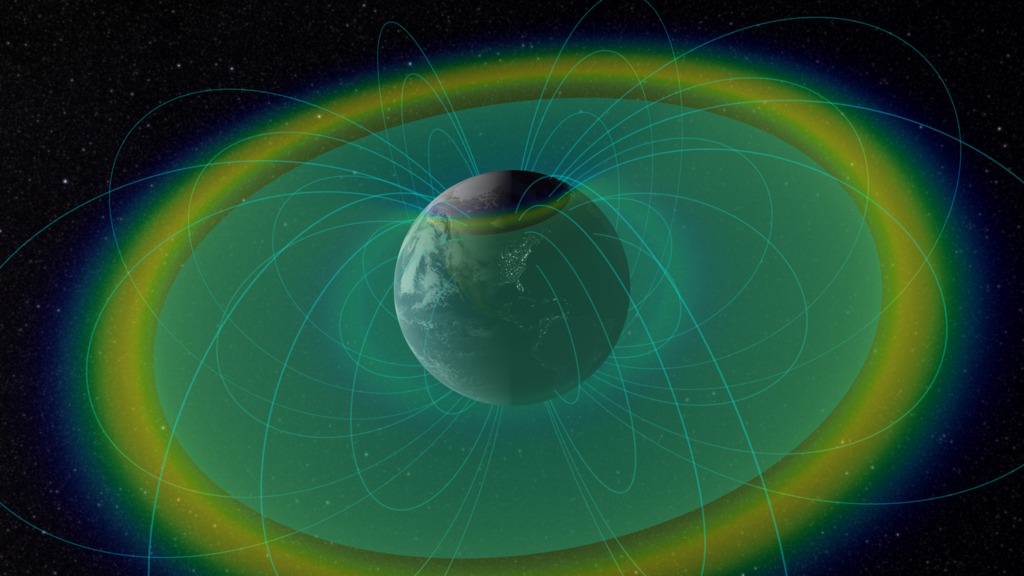
It’s a well-known fact that Earth’s ozone layer protects us from a great deal of the Sun’s ultra-violet radiation. Were it not for this protective barrier around our planet, chances are our surface would be similar to the rugged and lifeless landscape we observe on Mars.
Beyond this barrier lies another – a series of shields formed by a layer of energetic charged particles that are held in place by the Earth’s magnetic field. Known as the Van Allen radiation belts, this wall prevents the fastest, most energetic electrons from reaching Earth.
And according to new research from NASA’s Van Allen probes, it now appears that these belts may be nearly impenetrable, a finding which could have serious implications for future space exploration and research.
The existence of a belt of charged particles trapped by the Earth’s magnetosphere has been the subject of research since the early 20th century. However, it was not until 1958 that the Explorer 1 and Explorer 3 spacecrafts confirmed the existence of the belt, which would then be mapped out by the Explorer 4, Pioneer 3, and Luna 1 missions.
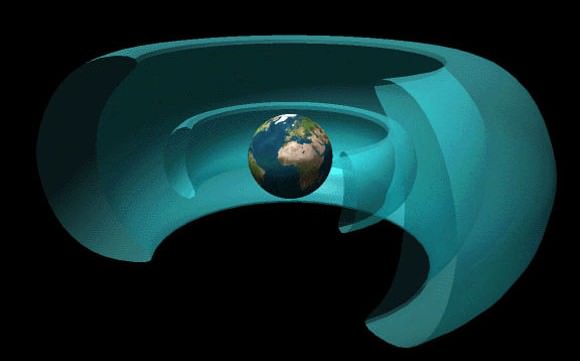
Since that time, scientists have discovered much about this belt, including how it interacts with other fields around our planet to form a nearly-impenetrable barrier to incoming electrons.
This discovery was made using NASA’s Van Allen Probes, launched in August 2012 to study the region. According to the observations made by the probes, this region can wax and wane in response to incoming energy from the sun, sometimes swelling up enough to expose satellites in low-Earth orbit to damaging radiation.
“This barrier for the ultra-fast electrons is a remarkable feature of the belts,” said Dan Baker, a space scientist at the University of Colorado in Boulder and first author of the paper. “We’re able to study it for the first time, because we never had such accurate measurements of these high-energy electrons before.”
Understanding what gives the radiation belts their shape and what can affect the way they swell or shrink helps scientists predict the onset of those changes. Such predictions can help scientists protect satellites in the area from the radiation.
In the decades since they were first discovered, scientists have learned that the size of the two belts can change – or merge, or even separate into three belts occasionally. But generally the inner belt stretches from 644 km to 10,000 km (400 – 6,000 mi) above the Earth’s surface while the outer belt stretches from 13,500 t0 58,000 km (8,400 – 36,000 mi).
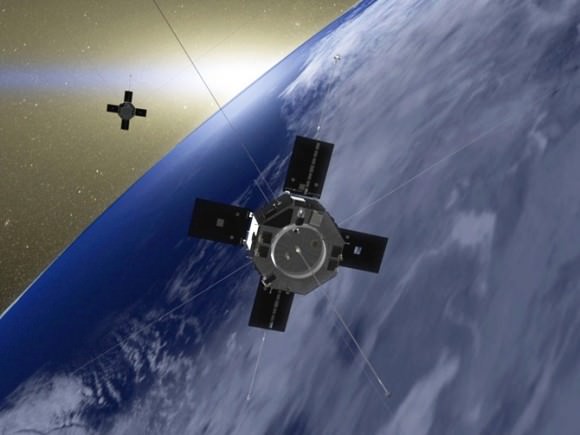
Up until now, scientists have wondered why these two these belts have existed separately. Why, they have wondered, is there a fairly empty space between the two that appears to be free of electrons? That is where the newly discovered barrier comes in.
The Van Allen Probes data showed that the inner edge of the outer belt is, in fact, highly pronounced. For the fastest, highest-energy electrons, this edge is a sharp boundary that, under normal circumstances, cannot be penetrated.
“When you look at really energetic electrons, they can only come to within a certain distance from Earth,” said Shri Kanekal, the deputy mission scientist for the Van Allen Probes at NASA’s Goddard Space Flight Center in Greenbelt, Maryland, and a co-author on the Nature paper. “This is completely new. We certainly didn’t expect that.”
The team looked at possible causes. They determined that human-generated transmissions were not the cause of the barrier. They also looked at physical causes, asking if the shape of the Earth’s magnetic field could be the cause of the boundary. However, NASA scientists studied and eliminated that possibility and determined that the presence of other space particles appears to be the more likely cause.
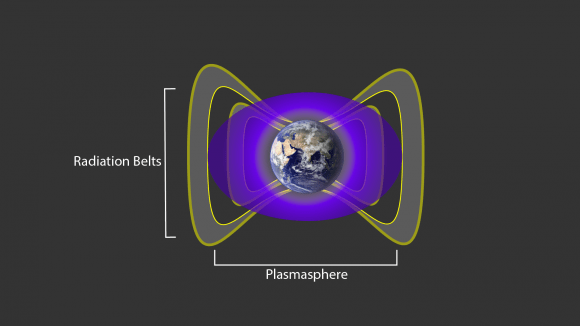
The radiation belts are not the only particle structures surrounding Earth. A giant cloud of relatively cool, charged particles called the plasmasphere fills the outermost region of Earth’s atmosphere, beginning at about 600 miles up and extending partially into the outer Van Allen belt. The particles at the outer boundary of the plasmasphere cause particles in the outer radiation belt to scatter, removing them from the belt.
This scattering effect is fairly weak and might not be enough to keep the electrons at the boundary in place, except for a quirk of geometry – the radiation belt electrons move incredibly quickly, but not toward Earth. Instead, they move in giant loops around Earth.
The Van Allen Probes’ data show that in the direction toward Earth, the most energetic electrons have very little motion at all – just a gentle, slow drift that occurs over the course of months. This movement is so slow and weak that it can be rebuffed by the scattering caused by the plasmasphere.
This also helps explain why – under extreme conditions, when an especially strong solar wind or a giant solar eruption such as a coronal mass ejection sends clouds of material into near-Earth space – the electrons from the outer belt can be pushed into the usually-empty slot region between the belts.
“The scattering due to the plasmapause is strong enough to create a wall at the inner edge of the outer Van Allen Belt,” said Baker. “But a strong solar wind event causes the plasmasphere boundary to move inward.”
A massive inflow of matter from the sun can erode the outer plasmasphere, moving its boundaries inward and allowing electrons from the radiation belts the room to move further inward too.
The Johns Hopkins Applied Physics Laboratory in Laurel, Maryland, built and operates the Van Allen Probes for NASA’s Science Mission Directorate. The mission is the second in NASA’s Living With a Star program, managed by Goddard.
A paper on these results appeared in the Nov. 26, 2014, issue of Nature magazine. And be sure to watch this animated video produced by the Goddard Space Center that explains the Van Allen belt in brief:
Further Reading: NASA
New Timelapse Shows Urban Nightscapes Without Light Pollution
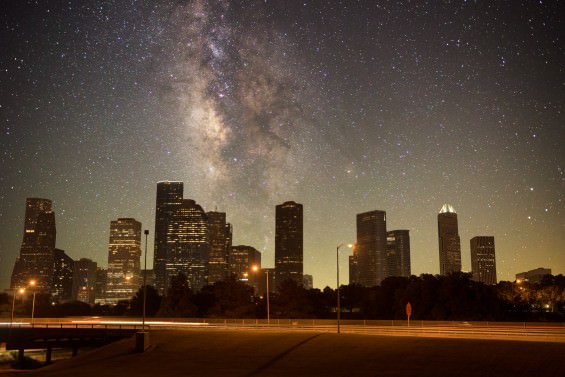
What if we could have the best of both worlds, where a vibrant city didn’t interfere with the view of the night sky? That was the thought of astrophotographer Sergio Garcia Rill when he decided to create simulated versions called “Urban Nightscapes.”
“I have been shooting astrophotography nightscapes for a few years now, but due to light pollution I need to travel hours away from the city to be able to see and photograph the night sky,” Rill wrote on his website. “But I wanted to make a combination of what it might be to see the night sky from within the city and my Urban Nightscapes series was born.”
His first video includes Texas cities of Houston, Dallas, Austin and San Antonio, and he makes it clear, the images and video he’s produced are mockup views.
“The stars in the video have been added through digital manipulation and the sky doesn’t look that way inside the city due to the light pollution,” Rill clarified. “I did my best effort to try to simulate the sky as it would have looked without light pollution but I am aware that not all the segments have achieved that, and I’m aware that this kind of shots are (at least at the moment) impossible to do in camera.
Enjoy the video above, and we’ll look forward to more in the future! Find out more about Rill’s project on his website.
Yuri Gagarin Memorialized in a Funky Music Video
On April 12, 1961, Soviet cosmonaut Yuri Gagarin entered the “realm of myth and legend” when he became the first human in space and the first person to orbit the Earth. Now, over 53 years later, Gagarin is memorialized with (among many things) a superhero-esque statue in Moscow, yearly Yuri’s Night celebrations held around the world, a launch pad at Baikonur Cosmodrome…and this music video for a hip new tune titled “Gagarin.”
Oh kids these days.
Created by the two-person London-based band PUBLIC SERVICE BROADCASTING “Gagarin” is the first single released off their new album “The Race for Space.” The music and video, which uses newly-available footage from the Soviet space program, is a “brassy, funk-heavy superhero theme song for the most famous man in the world at the time” and “reveals a new side to the band – not least their considerable dancing skills.”
PSB creator J. Willgoose, Esq. explains the rationale behind the song:
“We didn’t want to be too literal in our interpretation of the material we were given – material that was full of heroic language and a sense of exuberance, with lines like ‘the hero who blazed the trail to the stars’, and ‘the whole world knew him and loved him’. It seemed more appropriate to try and re-create some of that triumphant air with a similarly upbeat song – and when it came to creating the video, the best way we could think of to communicate that sense of joy was to get our dancing shoes on.”
As a fan of Yuri, spaceflight, and brass-band breakdancers in astronaut suits, I give this video two Vostoks up.
You can pre-order PSB’s newest album here, and follow them on Twitter and Facebook, and YouTube.
Video © PUBLIC SERVICE BROADCASTING. HT to Xeni Jardin at BoingBoing.
Wavelight: Riveting New Night Sky Timelapse
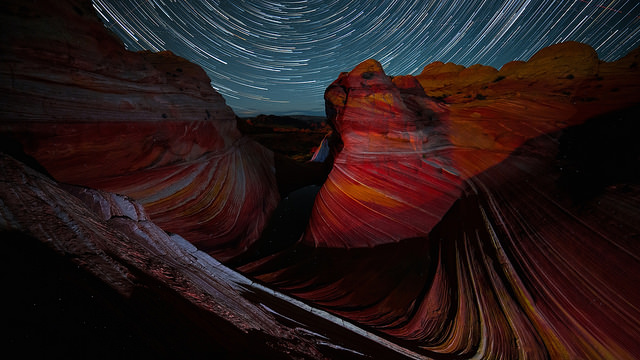
Sandstone formations can be amazing, and if you’ve ever seen or heard about the legendary and hard-to-get-to “Wave” formation in Arizona, you’ll agree it would be a stunning location for a night sky photography shoot. Our friend and timelapse guru Gavin Heffernan was commissioned by the BBC to shoot a timelapse video from this location, and it is absolutely stunning.
“As far as I know, this is the first astrophotography timelapse ever filmed at this amazing location,” Gavin told us via email. “We had seen many beautiful night pictures taken there but no actual timelapses, so we went for it!”
Enjoy the video above, as well a some imagery, below:
This is a video where star trails and rock trails collide! It was assembled from over 10,000 stills snagged on two grueling trips. Check out more of Gavin’s work at his Sunchaser Pictures website.
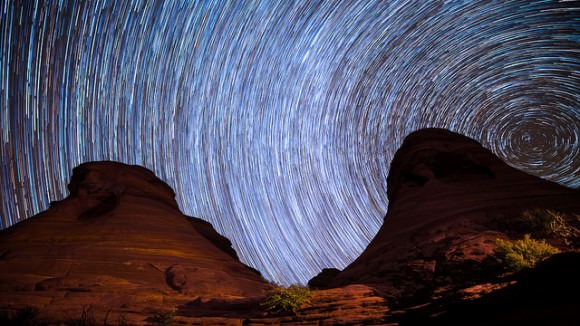
WAVELIGHT from Sunchaser Pictures on Vimeo.
See What Astronauts See In This Stunning ISS Timelapse
Yes, it’s another time-lapse video made from photos taken by astronauts aboard the ISS. Yes, it’s been digitally remastered, smoothed-over, and set to a dramatic technopop soundtrack. But no, it’s still not boring because our planet is beautiful and spaceflight is and always will be absolutely fascinating.
There. I said it.
The video above “Astronaut – a Journey to Space” is everything that I just mentioned and was compiled and edited by photographer and video artist Guillaume Juin. The original images were gathered from Johnson Space Center’s Gateway to Astronaut Photography of Earth site, and were captured during ISS missions from 2011 to 2014. Aforementioned dramatic technopop music is by Vincent Tone. Watch it above, or for maximum impact watch it full-screen. (I strongly advise the latter.) Enjoy!
HT to Sploid and fellow EFT-1 NASA Social participant Ailyn Marie for bringing this to my attention.
Persistent Train: Exploding Meteor Captured in New Timelapse
The Milky Way likes to amaze us, and this great video shot by Wes Eisenhauer outside of Custer, South Dakota, shows an amazing exploding meteor and what is known as a persistent train from the fireball. The “remains” of the fireball persisted for several minutes (just a few seconds in the timelapse) and upper atmosphere wind shear twisted and swirled the expanding debris.
This was shot on October 16th, 2014, before the official start of the Orionid meteor shower, so this was perhaps a random larger meteor streaking through the sky.
Continue reading “Persistent Train: Exploding Meteor Captured in New Timelapse”
How NASA and SpaceX are Working Together to Land on Mars

It is no secret that NASA is seeking out private space contractors to help bring some of its current plans to fruition. Naturally, these involve restoring indigenous launch capabilities to the US, but also include the more far-reaching goal of sending astronauts to Mars. Towards that end, NASA and SpaceX participated in an unprecedented data-sharing project that will benefit them both.
Continue reading “How NASA and SpaceX are Working Together to Land on Mars”
On Scarves, Squirrels, and the Fate of the Universe
Are you scared of the dark, personal failure, or just feeling a tad nihilistic? Maybe you’re worried about asteroids, solar flares, or the heat death of the Universe… or perhaps you’ve just misplaced your favorite winter accessory and it’s driving you… er, nuts. If any of these are applicable (or even if none is) be sure to watch the ridiculously award-winning video above by animator Eoin Duffy. (And if you’re wondering why I’m sharing this on Universe Today, well… you’ll see.)
Click. Play. Now.
Credit: Eoin Duffy. HT to the Observation Deck @io9.
One More Absolutely Amazing Timelapse from the International Space Station
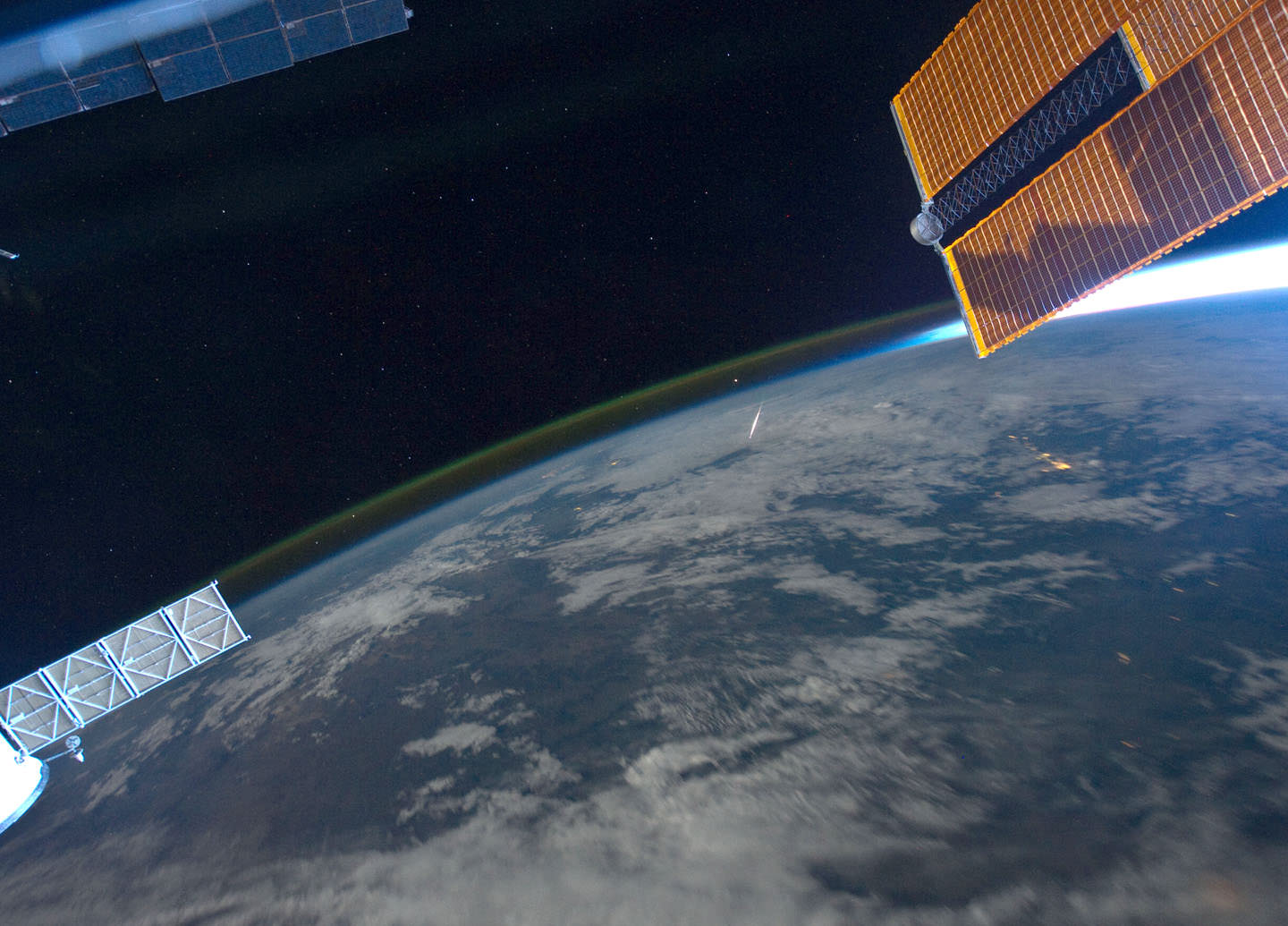
We’ve featured several timelapse compilations of footage and imagery taken from the International Space Station (like here, here and here) but this one put together by Phil Selmes is great in that it also includes footage *of* the ISS, as shot by the astronauts on the space shuttle as well as actual space to ground audio communications. Phil said he included the audio clips “to remind the audience of the humanity that inhabits the space station.”
There is just something about these videos from the ISS that speaks to your soul. Phil told Universe Today that while putting this together, he saw “how different our world looks just 370kms above our heads. I didn’t see politics, races, borders, countries, religions or differences,” he said via email. “I saw one planet, one world, one incredibly beautiful miracle in the absolute vastness of the universe. It gave me some perspective, ironically it brought me ‘back to earth.’”
The video and imagery is from the Johnson Space Center’s Gateway to Astronaut Photography of the Earth.
Look for more #TimelapseThursday videos in the weeks to come.

